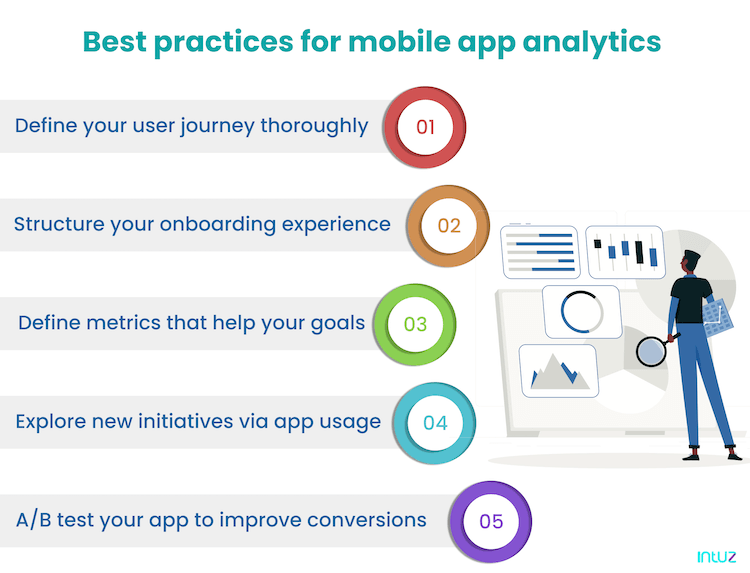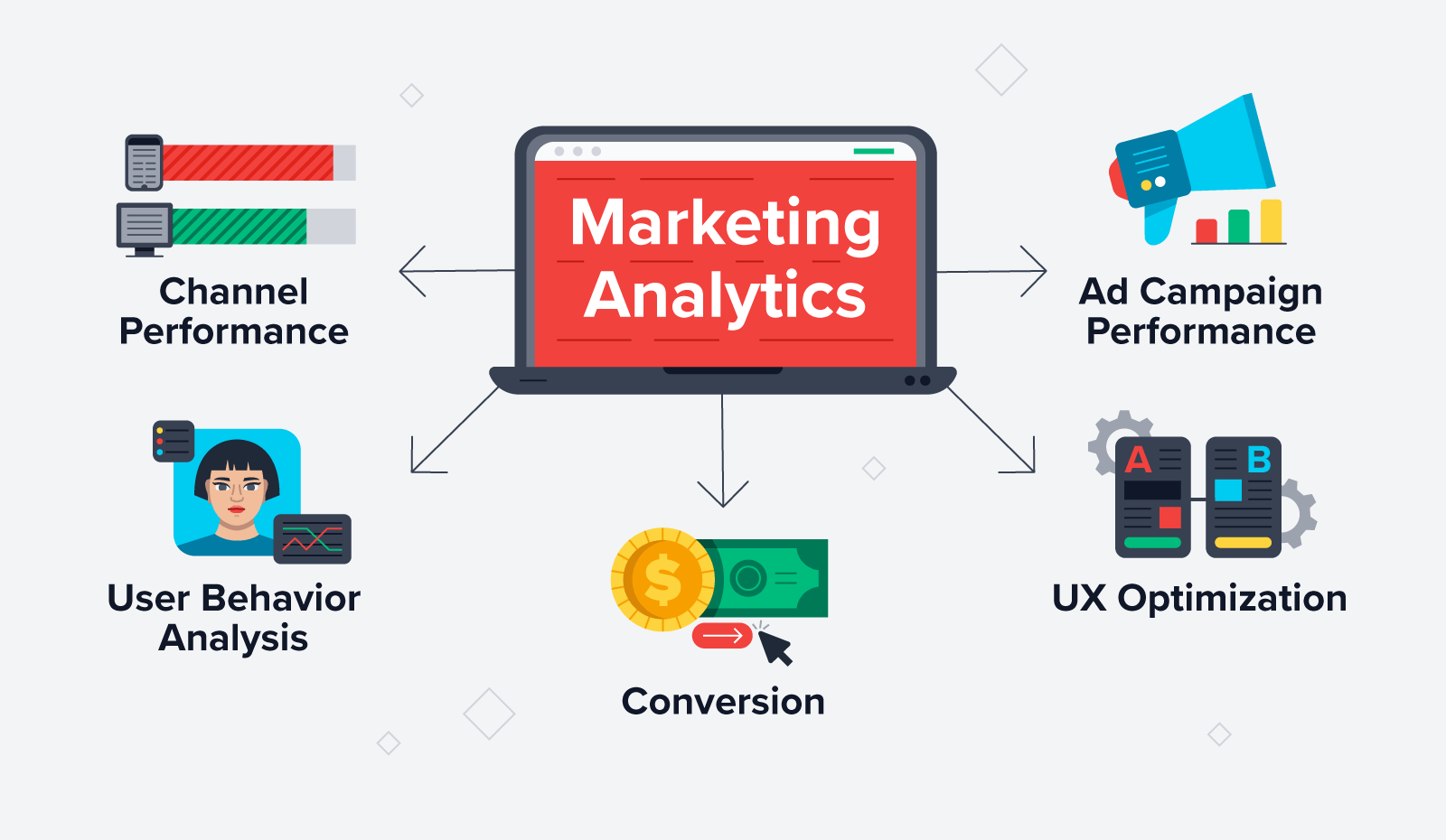
Analytics In The Age of Mobile: 5 Ideas To Track Your Success
Mobile analytics are the new focus point for marketing. We live in the age of mobile, there is no doubt about this. Read on to discover how to harness the power of modern technology and mobile analytics for your business.
Quick Takeaways:
- Businesses must prioritize mobile analytics to understand and capitalize on customer behavior
- Tracing purchases helps to gain deeper insights into campaign effectiveness
- Mobile Analytics allows businesses to analyze each step of the funnel
- Encouraging users to log in across devices enables businesses to gather valuable data
Why are Mobile Analytics so Important?
Consumers, leads, and prospects are using their smartphones to do pretty much everything – find information on what to buy, read reviews while in store, share comments and advices with friends, purchase products and services.
If you have a sound mobile strategy you are already reaping the benefits: offering the right product at the right moment on the right device is essential for selling more, selling better and building stronger bonds with fans and customers.
But, no matter how thorough your mobile strategy is there is for sure one area that is still driving you nuts: mobile analytics.
According to Mixpanel, “70% of ‘screen time’ is spent on mobile” and “92% of time on mobile is spent in apps”, so you can see why it’s so important to nail your mobile app analytic strategy.
It is important to be able to trace user behavior and the performance of mobile features. Tracking information like this will give you a clear sense of what’s working and what’s not.

The Issue at Hand
Usually, customers jump like crazy frogs from one device to the other, finding information about products on smartphones, being retargeted on a tablet, and finally completing their purchase on their desktop computer. It is increasingly hard and frustrating to follow their path and assign the right weight to specific campaigns, devices and strategies.
There are lots of data to consider: session time, most popular pages, geolocation, bounce pages and so on. It can become difficult to stay updated and aware of user behavior and your mobile customer experience.
Below I will outline 5 tactics that will allow for a better understanding of the various routes your customer might take before accepting – or not – the offer you are making.

1. Use “unique campaign identifiers”
What I mean by “unique campaign identifiers” is something that will allow you, once the purchase is made or at least initiated, to assign that specific transaction to a campaign that might have targeted the customer on a different device.
Let’s think, for example, about SMS campaigns: your prospects receive a coupon via message, some will like your offer and then make the purchase at home, on a different device.
That coupon code you have sent them is the “key”, the “unique campaign identifier” that will allow you to tie this purchase to the original SMS campaign: this will let you analyze a lot more deeply the results of any marketing activity, breaking (or at least reducing) the barrier between devices.
2. Analyze your traffic sources and trends
Another useful mobile analytics tactic is to closely monitor your traffic sources, trends and variations. Say you can spot spikes in purchases from a certain place a few days after mobile traffic surged in that area.
Even if the majority of transactions were made on desktop computers, you can infer with a pretty good level of accuracy that mobile contributed heavily to that result.
There are several good tools to analyze and improve the performance of the mobile sites:
– Google Analytics: includes the number of mobile users, the bounce rate and average time, that show how user-friendly your mobile site is.
– Flurry: provides data on active users, frequency, sessions, retention, demographics and you can create conversion funnels.
– Mixpanel: tracks web and mobile user interactions that focuses on individual user data
These tools give you an inside at your audiences behavior and keep you updated on what is working for the mobile side of your business or brand.
Check out this video from Google Analytics:
3. Monitor every step of the funnel
With the most modern tracking technologies it is possible to record every single action a user performs on a web page or a mobile app. This allows you to get a deeper understanding of the effectiveness of any campaign.
For example, you can keep track of searches for a specific product on the mobile version of your e-commerce site. Then, you can link purchases made on desktop shortly thereafter to those mobile searches.
Tracing every step of the funnel allows you to attribute the correct value to the various elements of your marketing assets.
4. Vary your metrics
An important thing to keep in mind when tracking and analyzing mobile-oriented data is that you must look at it through many lenses.
Smartlook gave some great tips on the use and analysis of metrics…
Instead of measuring the success of your mobile efforts through one scope, pull data from a few different variations to get more of the bigger picture. It is much more telling and more beneficial to hand pick a few metrics that reflect your goals and analyze that.
Additionally, analyzing cross-platform data could also answer some questions you might have about performance. Again, an approach like this allows you to get the full picture of your insights and tell a better story of your progress.
Finally, allocate your metrics so that they are relevant to each and every different goal you have. Look at different metrics for different teams and make the data accessible throughout.
5. Invite your visitors to login
This is the Holy Grail: if you are able to have your visitors login when they land on your pages or app, no matter what device they are using, you hit the jackpot.
You will always have the right data to tie any action, click, visit and purchase to that specific user. This helps you understand exactly where your marketing dollars are working and where they are not.
If you think about it, this is exactly what all the Big Ones do: What is the first thing Amazon asks you to do when you download their app? Login. Once you purchase something on Amazon, you are thereafter easily identified and measured.
You cannot even view a bit of any Facebook page if you are not logged in, no matter what device you are using.
Why are they doing it? Because it works! Asking to register and login might slightly reduce your conversion rates, but the advantages in terms of targeting and analytics will far outweigh the potential initial loss.
For example, a great start is automatically logging in your customer after their first purchase using “social logins” so they don’t have to type anything. Just tap a few buttons and your viewer is immediately logged in.
![Understanding Mobile Analytics [Infographic] - Retail TouchPoints](https://marketinginsidergroup.com/wp-content/uploads/2023/09/SAPMobileAnalytics.jpg)
By harnessing the power of data-driven insights and embracing the opportunities presented by mobile analytics, companies can tailor their strategies to deliver the right products at the right moment to the right audience






